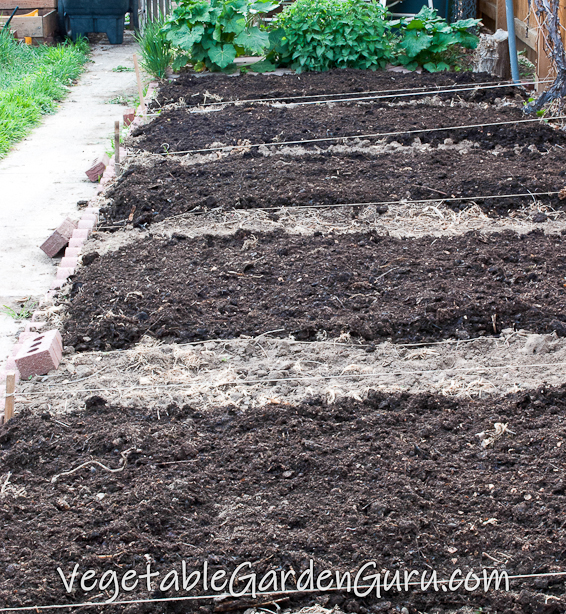~ Spring Soil Preparation ~
Make Microbes Do the Work for You!
Yay... it's officially spring!
Besides lovin' on my little seedlings growing under lights in the basement, I'm also feeling the itch to get my hands in the soil.
Many people find it harder to love on their soil than their seedlings though, because clearing off the surface, digging it up and pulling a bunch of weeds can be a ton of work. But it doesn't have to be that way, if you set it up so that the microbes do all the work for you!

"It's alive. It's ALIVE!" (Frankenstein, 1931)
Soil too, is alive - it's not just bits of dead rock that anchor plant roots. The more we discover about the living soil ecosystem, the more astonished I am at what goes on underground, unseen (well, unless you happen to have an electron microscope laying around).
Here are a few amazing things:
- Over 95% of life on land lives underground.
- The tips of plant roots engulf bacterial cells, partially digest them to extract nutrients, and then spit them back out, where the bacteria recover and rebuild themselves. This process also stimulates the growth of new root hairs, expanding their uptake ability.
- Plant roots "talk" to microscopic, "arbuscular mycorrhizal fungi" in the soil and ask them to bring specific nutrients that the plant needs. Since the fungi's hyphae (filaments) extend much farther than the plants' roots, they can source minerals from a huge area. The fungi secrete acids that dissolve minerals from rock
particles, then move these nutrients back along the fungal network to the plant's roots.
- The fungi then trade the mineral nutrients for sugars, which the plant makes via photosynthesis and which the fungi cannot make themselves. Up to 60% of the sugars a plant produces may be traded to fungi. It's that sort of healthy codependency known in biology as a symbiotic relationship.
(Credit to Christine Jones, PhD, and the speakers at the Bionutrient Food Association's 2021 Soil and Nutrition Conference)
When we work in partnership with the soil ecosystem it will feed plants, retain moisture, provide air spaces, aggregate well, resist compaction, retain nutrients, and eliminate the need for backbreaking work. (Free Bonus! It smells wonderful.)
So with this miraculous living ecosystem in mind…
Soil Preparation To Preserve Your Microbes
and Make Your Life Easier
It's not so much that we need to import these microbial dudes (though we could by brewing
microbial teas
), but rather that we need to stop doing the things that kill them off (tilling, using chemical fertilizers, pesticides, or weed killers).
1) Never walk on the growing beds (or rows), but work them from the paths on either side. Rows or beds should be no wider than twice as far as you can reach. This prevents compaction and allows microbes access to air and water spaces, and keeps aggregates spongy.
2) Leave soil and last year's roots undisturbed below about 2-3" down. As the roots decay, they provide channels for water and air to penetrate, become earthworm freeways, and feed the microbes.
3) Cut weeds off below the crown with a hoe or weeding sickle before they flower, and then lay the weed down on the surface for mulch. (But if they're dandelions, get 'em deep if you can or else the stored energy in the taproot will grow a new top).
4) Take a soil test and send it to a professional lab (not your state extension office, which does not do a complete test - see link at bottom*) so that you know whether to:
5) Make a custom fertilizer blend to help correct mineral
imbalances, OR buy a complete organic fertilizer to feed this year's crop. Apply these by just scratching them an inch or two into the surface
6) Use about a half to one inch of well-broken down compost on the surface
7) After setting out transplants (or after seeds have sprouted and grown up a bit), use mulch to cover the soil. Mulch protects soil microbes from UV light and heat, and helps save water. You can use straw or hay ( though both can bring in weed seeds - or even carry persistent herbicides if not organic), uprooted or severed weeds laid flat (my fave, 'cause I'm lazy), leaves, or use a "dust mulch" (especially if you have slug problems). A dust mulch is created by frequent, shallow surface disturbance with a hoe, which breaks capillary action to the surface, thereby retaining soil moisture.
For First-Time Gardeners...
All this said, if you're a first-time gardener looking at a baked-hard weed patch, start by using the
techniques here
under the subhead "Here are Four Alternatives to Tilling".
*Soil Testing



